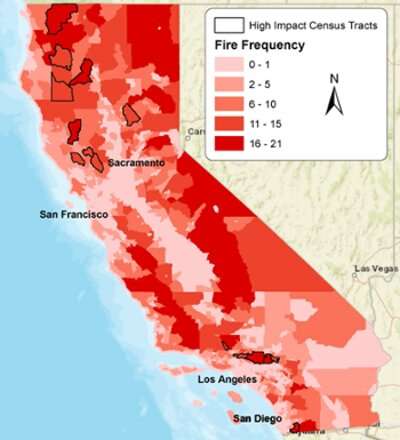The human impact of climate-intensified health risks

Jun Wu, professor of public health, leads a lab at UCI that focuses on the human health impacts of air pollution and other changes and disruptions in our climate and environment. The severity of risks due to warming temperatures, wildfires, extreme weather events and rising sea levels varies according to where people live, underlying health conditions and amount of exposure. The most vulnerable populations are children, pregnant women, older adults and low-income communities.
In the past few years, the Wu lab researchers – who include Shahir Masri, assistant specialist in air pollution exposure assessment and epidemiology, as well as postdoctoral fellows and undergraduate and graduate students – have paid particular attention to climate-intensified health risks in the state of California. Team members use a combination of big data, advanced spatial analysis, statistical methods, experiments, fieldwork and community participation to provide evidence-based results that can be used to help promote health and reduce disparities.
Their latest study examined the relationship between wildfire impacts and socioeconomic vulnerability. Between 1980 and 1999, catastrophic wildfires happened an average of one and a half times per decade. From 2000 to 2019, incidents increased to seven per 10-year period and cumulative costs jumped from $10 billion to $75 billion.
"Intuitively, rural areas sustain more wildfire damage than other parts of the state," Masri says. "Importantly, however, these areas are also characterized by higher poverty rates, unemployment and a greater percentage of low-income residents without college degrees. We also found that, whether rural or not, communities hit hardest by wildfires had much higher proportions of elderly residents."
"The work underscores the need for enhanced aid and recovery efforts in these regions and the importance of forest management and other fire prevention strategies," Wu says. "It also signals policymakers and state agency officials to consider elderly and low-income individuals when allocating funds for wildfire prevention resources."
Heat waves, like wildfires, are getting stronger and more frequent. Exposure to high air temperatures in late pregnancy is increasingly recognized as a risk factor for preterm birth. The team also examined California singleton births between 2005 and 2013 to identify any potential combined effects of heat waves, air pollution and green space on pregnant women.
Findings suggest that reducing exposure to extreme heat before delivery may lower the risk of preterm birth for pregnant women with high exposure to air pollution and low exposure to green space. Researchers recommend targeted interventions – such as extreme heat warning systems, reduced outdoor activities and more cooling zones – to help optimize potential benefits.
More information:
Yi Sun et al, Examining the joint effects of heatwaves, air pollution, and green space on the risk of preterm birth in California, Environmental Research Letters (2020). DOI: 10.1088/1748-9326/abb8a3
Shahir Masri et al, Disproportionate Impacts of Wildfires among Elderly and Low-Income Communities in California from 2000–2020, International Journal of Environmental Research and Public Health (2021). DOI: 10.3390/ijerph18083921
Provided by University of California, Irvine